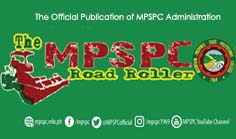INVENTORY OF FISH AND SHELL SPECIES WITH AQUACULTURE POTENTIAL IN
MOUNTAIN PROVINCE
Domingo L. Lawagey
ABSTRACT
The study was conducted to identify and document the endemic fish and shell species that are permanent or transient residents in in-land waters of Mountain Province from December 2008 to March 2009. To determine species distribution, abundance/stock, and community composition, fieldwork was conducted to gather data on the characteristics of the freshwater fish and shell. Observation and collection were done in order to identify and enumerate all fishes and shell species in as many habitats as possible.
Results showed that different water bodies which are all fresh water ecosystem (lakes, ponds, rivers, creeks and ricefields) in Mountain Province serve as sources of aquatic food particularly fish, shell and crustaceans. These are endowed with indigenous fishes such as the igat (Anguilla rostrata) , dojo (Misgurnus anguillicaudatus), wading (Pseudogobius javanicus), bunog (Gobius criniger), gurgurami gold (Redigobius chrysosoma), gurgurami black (Oryzias luzonensis), ayungin (Leiopotherapon plumbeus), turuchok (Anguilla japonica), carpa (Cyprinus carpio) and tilapia (Oreochromis niloticus), crustaceans and shell such as luso (Melanoides spp), bennek/tik- am (Mugil dussumieri), kumpiyas, ket-an (Brotia insolita), lesdeg (Bellamya angularis), sup-sup or bessukol (Viviparus angularis), ginga (Melanoides granifera) udchila and kuhol(Pomacea canaliculata), as well as other aquatic life like udang (Macrobachium rosenbergii), bakbak (Rana species) and gakki (Carcinedes maenas). These aquatic species have long been one of the major sources of protein of the people of Mountain Province.
These species were found to be wild in nature except for tilapia and carpa which were raised through aquaculture production. However, other fish species such as dojo and “turuchok” have great potential for pond production.
Based on the results of the study, species that thrive on lakes, ponds, rivers, ricefields have great potential for mass production and integration on rice farming practice.





















